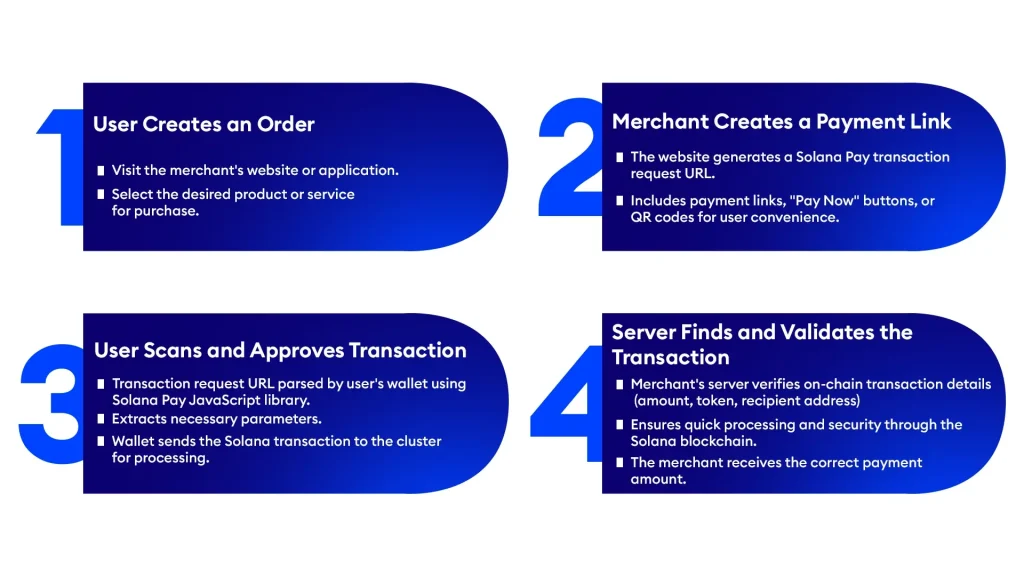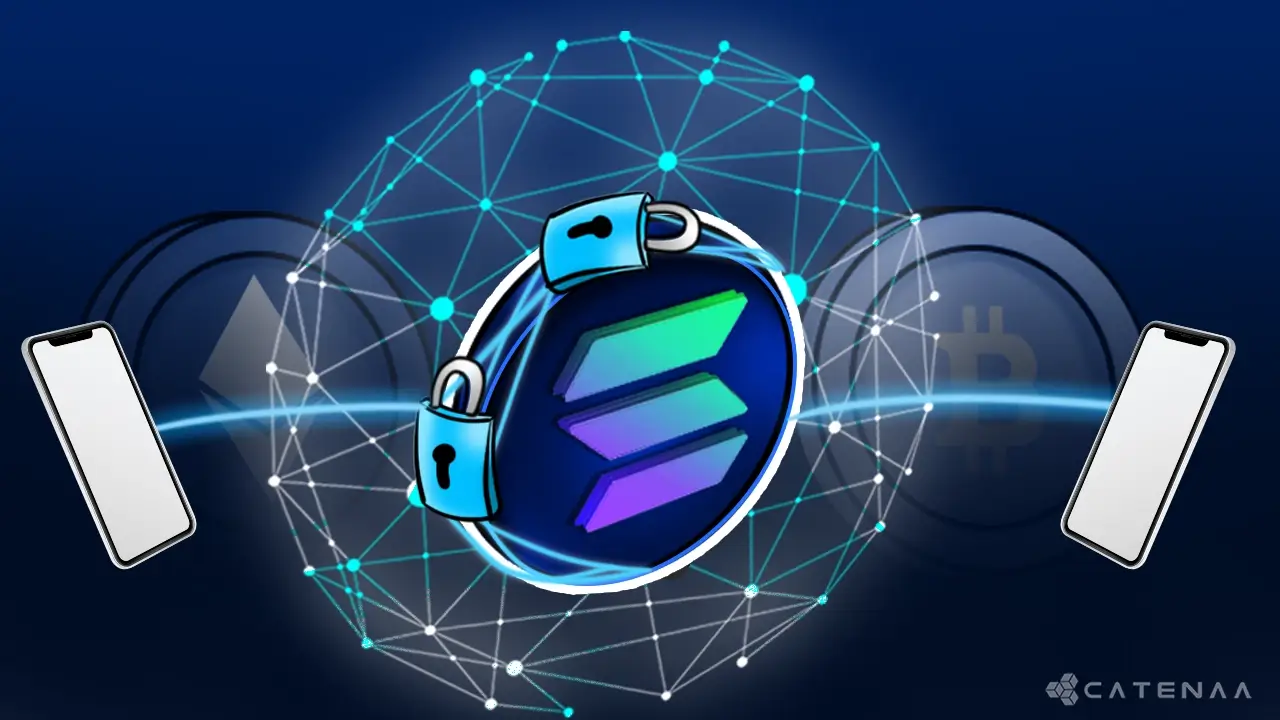Table of Content
In today’s world of digital currencies, Solana stands out as a strong option for those looking beyond Ethereum’s limitations. Unlike Ethereum, Solana tackles the issue of scalability with its unique Proof of History (PoH) and Proof of Stake (PoS) consensus mechanisms, which add timestamps to its blockchain, making transactions much faster.
For example, Solana’s network can handle an impressive 65,000 transactions per second, a big improvement compared to Ethereum’s 15 transactions per second, while Bitcoin handles just seven per second.
Ethereum, the second most popular cryptocurrency, faces problems like transaction congestion and high fees, making transactions less smooth for users. Solana’s PoH protocol bypasses these problems, ensuring smooth and affordable transactions, often with fees as low as a fraction of a penny.
Despite being relatively new, Solana has quickly climbed to the top 10 in the cryptocurrency rankings, securing the 5th position.
For those who value innovation, speed, and cost-effectiveness in blockchain technology, Solana is a compelling choice, challenging Ethereum’s and BTC’s dominance and providing a practical solution to the challenges faced by the second most popular cryptocurrency.
How to make and receive payments

Benefits of Using Solana for Payments
Solana Pay, despite its initial complexity, offers businesses a streamlined process for crypto transactions. Merchants can easily integrate Solana Pay by creating a Solana wallet and incorporating the code into their website. This allows customers to make online and in-person payments seamlessly using their SOL-supported wallets, scanning QR codes for quick transactions.
Beyond business transactions, Solana Pay serves developers by welcoming community suggestions for improvements and additional use cases through GitHub. Shere (GM Payments & Commerce at Solana), in a blog post, envisions Solana Pay utilizing NFTs to enhance both digital and physical transactions. For instance, buying a pair of shoes can result in two NFTs—one granting access to the metaverse with the purchased item and the other serving as a receipt, offering membership benefits in the retailer’s exclusive NFT club.
Solana Pay’s compatibility extends to wallets such as Phantom, Crypto Please, and FTX. Phantom is a dedicated Solana wallet for digital currency and NFT transactions, while Crypto Please facilitates cryptocurrency transfers through various messaging platforms. FTX, as an exchange, accepts Solana and various other cryptocurrencies. The future promises an expansion of wallets compatible with Solana Pay, providing users with diverse options for seamless crypto payments.
Technical overview of Solana’s blockchain technology
Solana’s blockchain technology stands out with its innovative Proof of History (PoH) consensus mechanism, distinguishing it from traditional Proof of Work (PoW) models like Bitcoin. PoH creates a chronological record for each transaction, ensuring efficient tracking and validation.
The key to Solana’s efficiency is its distinctive features:

Proof of History (PoH): Efficiently tracks and orders transactions, making it one of the most effective cryptocurrency projects.
Tower BFT: Leverages PoH as a cryptographic clock to achieve consensus without transaction latency, ensuring fast confirmation and seamless information exchange.
Sealevel: Facilitates simultaneous transactions on the same state blockchains, enhancing scalability across Solid State Drives (SSDs) and GPUs.
Turbine: Boosts transaction processing speed and resolves bandwidth issues by breaking down data into smaller, easily transmitted packets.
Pipeline: Allocates input data from transactions to the relevant hardware, ensuring quick validation and replication across the network.
Cloudbreak: A robust data structure enables multiple simultaneous read and write operations, contributing to the network’s scalability.
Archivers: Nodes storing Solana blockchain data, subject to regular checks to maintain data integrity.
Central to the Solana ecosystem is the native SOL token, serving various purposes such as transaction processing, staking, and interacting with smart contracts. SOL holders can also act as network validators, which is crucial for maintaining Solana’s integrity. The SOL cluster, a group of independent computers, verifies outputs and preserves unchallengeable records. The SOL protocol, akin to Ethereum’s ERC20, defines the token standard on the Solana blockchain, emphasizing SOL’s dual role in fee payment and validator eligibility. In line with Solana’s deflationary model, the platform burns SOL, ensuring a robust and sustainable environment for users and developers alike.
Solana, established in 2017 and governed by the Solana Foundation in Geneva, is a blockchain platform catering to decentralized and scalable applications. Differentiating itself with remarkable speed and reduced transaction costs compared to competitors like Ethereum, Solana’s native cryptocurrency, SOL, experienced a meteoric 12,000% surge in 2021. Despite the crypto market slump in 2022, SOL demonstrated resilience, bouncing back to nearly half of its lost market capitalization by the end of 2023.
Solana’s strength lies in its algorithmic approach, which eliminates performance bottlenecks in blockchain software and achieves scalability, security, and decentralization. The platform’s architecture boasts a theoretical capacity of 710,000 TPS on a standard gigabit network and an impressive 28.4 million TPS on a 40 gigabit network.
Understanding Solana: Its key features
Solana, often compared to blockchain giants like Bitcoin and Ethereum, sets itself apart with its remarkable transaction speed. This makes it a preferred choice for Defi activities and the utilization of SOL tokens. Key features that distinguish Solana include:

Scalability: Solana outshines many other blockchain platforms by handling up to 65,000 transactions per second, making it one of the fastest networks globally. This capability is crucial for accommodating high-volume applications effortlessly.
Low Transaction Fees: In contrast to other blockchain networks with high transaction fees, Solana offers a cost-effective solution. Its lower fees make it attractive to businesses and developers dealing with large transaction volumes.
Security: Solana’s architecture prioritizes security with multiple layers of encryption and authentication, enhancing resilience against hacking and security threats. This feature ensures a safe environment for businesses and individuals dealing with valuable data on the blockchain.
Decentralization: As a decentralized network, Solana operates without central authority control, ensuring transparency and security. This makes it a reliable option for those seeking to leverage blockchain technology without relying on centralized intermediaries.
Cross-Chain Compatibility: Solana is designed to seamlessly integrate with other blockchain networks, simplifying the development of decentralized applications (DApps) that can function across multiple platforms. This interoperability enhances flexibility for developers and businesses.
Energy Efficiency: Unlike proof-of-work blockchains such as Bitcoin and Ethereum, Solana adopts a proof-of-stake consensus mechanism, significantly reducing energy consumption. This eco-friendly approach appeals to users concerned about the environmental impact of blockchain technology.
Smart Contract Functionality: Solana supports smart contract functionality, empowering developers to create and execute complex business logic on the blockchain. This feature streamlines the development of DApps and automated processes, eliminating the need for intermediaries.
In summary, Solana’s blend of speed, scalability, low fees, security, decentralization, cross-chain compatibility, energy efficiency, and smart contract support positions it as a robust and versatile blockchain platform suitable for a wide range of applications.
The Rise of Solana in Payment Solutions
Yakovenko’s 2017 white paper introduced the Proof-of-History (PoH) concept, revolutionizing blockchain consensus by incorporating time verification. Addressing the inadequacies of existing blockchains, PoH encoded time into ledgers, ensuring synchronized decision-making.
In 2018, Yakovenko co-founded Loom, later rebranded as Solana. The project rapidly evolved, migrating to cloud networks and achieving an impressive 250,000 transactions per second on the public test net. As of December 12, 2023, Solana processed over 253 billion transactions at a remarkable average cost of $0.00025 per transaction, marking a significant milestone in its recent growth.


